Home / A Conversation With Pierre Lorinet
Share this article:
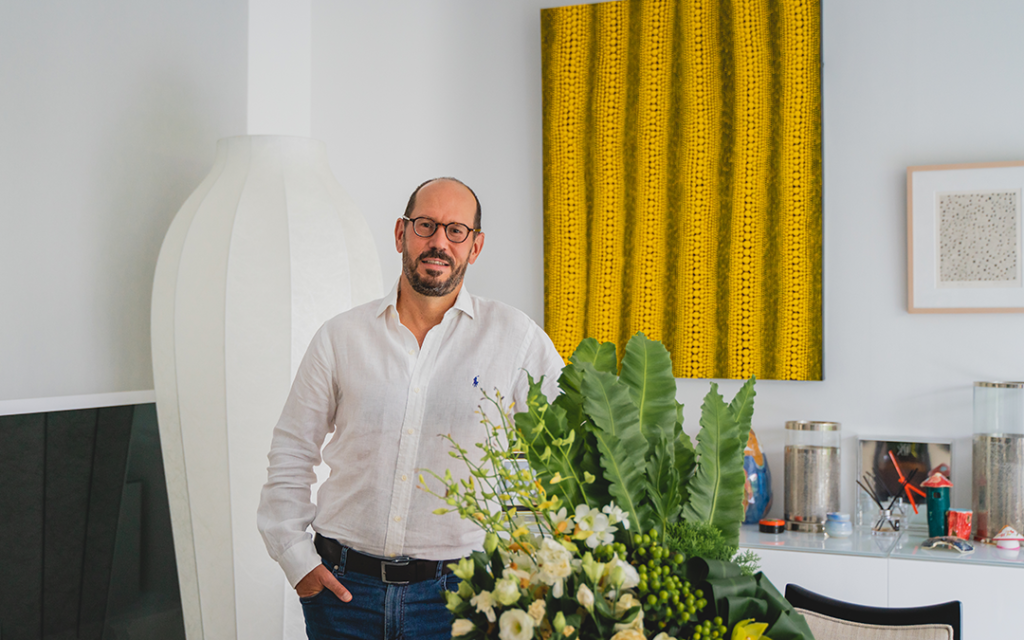
Hello Pierre, how and when did you start collecting art?
Pierre Lorinet: Visual arts have always been a feature of the family. My great-great-grandfather was an artist and we still have a lot of his paintings in the family. Some of them are in the style of Degas and other Impressionists of the time. He also had a summer studio, effectively a small house in a village in south-eastern Paris, where he would go in the summer to paint. This area is famous for painters; for example there was the Barbizon school in the 19th century, so a lot of artists lived around that area, and in the streets where he was, there were many other artists’ studios. This is the environment I grew up in. As a natural progression, I took up drawing and painting classes as a kid and eventually moved on to photography in later years. Obviously I’ve never been that good or achieved any form of success. My only claim to fame was being selected as a student for a photography project by the Magnum agency. We made a book where 10 of us ended up being published alongside Sebastião Salgado.
I’ve always loved visual art in all its forms. As a student , I used to have posters of work from famous artists such as Vermeer on my walls rather than sport or music celebrities. When I started working, I continued my interest in art by visiting galleries, museum shows, and I began to buy some works of art that I liked. That’s how I started collecting.
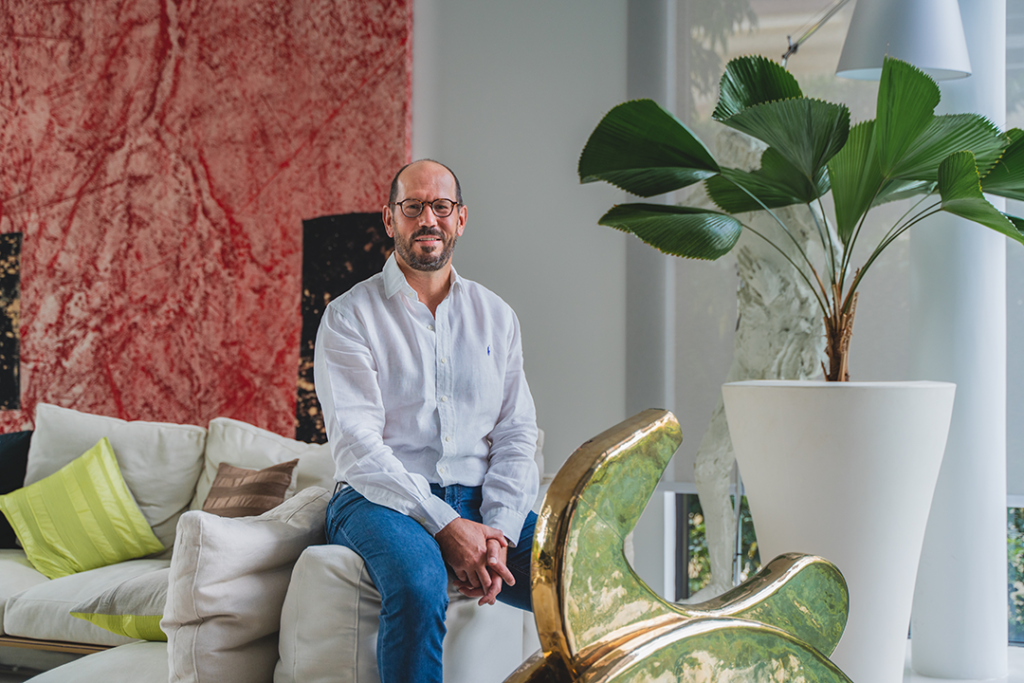
Could you tell us more about the first works you acquired?
Pierre Lorinet: It’s hard to remember to be honest. I do remember one in particular, which I bought from the Chelsea College of Arts Show in the early 2000s. The show presented student works which were relatively affordable and within my means at the time. I went to see the show, and there was one work I really liked, I think it was called Breath. It’s an etching of a photo, taken with a disposable camera, of someone under water releasing a breath of air, making large bubbles in the process. It’s a monochromatic, very stylized, and somewhat blurry picture. I liked it because its style represents what I have always enjoyed: simple evocative lines that you also find in sketches, drawings, and unfinished preparatory works.
That’s fantastic to hear, because I was just about to ask what genre or style of art it was, and you described it perfectly. What informs your collecting philosophy now? Do you see any continuation from your starting point?
Pierre Lorinet: Absolutely. I think as I’ve said, I’ve always been attracted to sketches and black and white drawings. I like simplicity in art and while I have a pretty eclectic taste, this preference has informed what I chose as the focus of the collection.
In the early to mid 2000s, I was buying somewhat randomly works that I liked. Eventually, I wanted to take on a more structured and coherent approach. At that point, I felt the need to define a theme, because the art market and the art world is vast. You could just go round and pick and choose at random but it doesn’t really create continuity and a narrative. I felt something was missing. So together with my art advisor (Edward Mitterrand) who is now a friend, we thought about this and based on my taste and interests, we settled on minimalism and sculpture. This theme coincides well with what I was describing earlier, the attraction to simplicity, bringing visual art to its fundamental expression and materials: in other words to its core elements. That is ultimately where we focused our attention in defining the artists and works I wanted to add to the collection. Quite a few of the works I acquired in this initial period are in this room. For example, this rocking horse by Sherrie Levine. I love it because it is a simple representation. It is like a toy, but with the material and the patina added to it, it takes on a different dimension. It becomes sort of a mythical animal. And with its turned head it also comes alive. I also enjoy the fact that you can live with it; I like being around art, and I don’t think it should be put on a pedestal. My kids used to rock on it sometimes. This is how art should be: accessible.
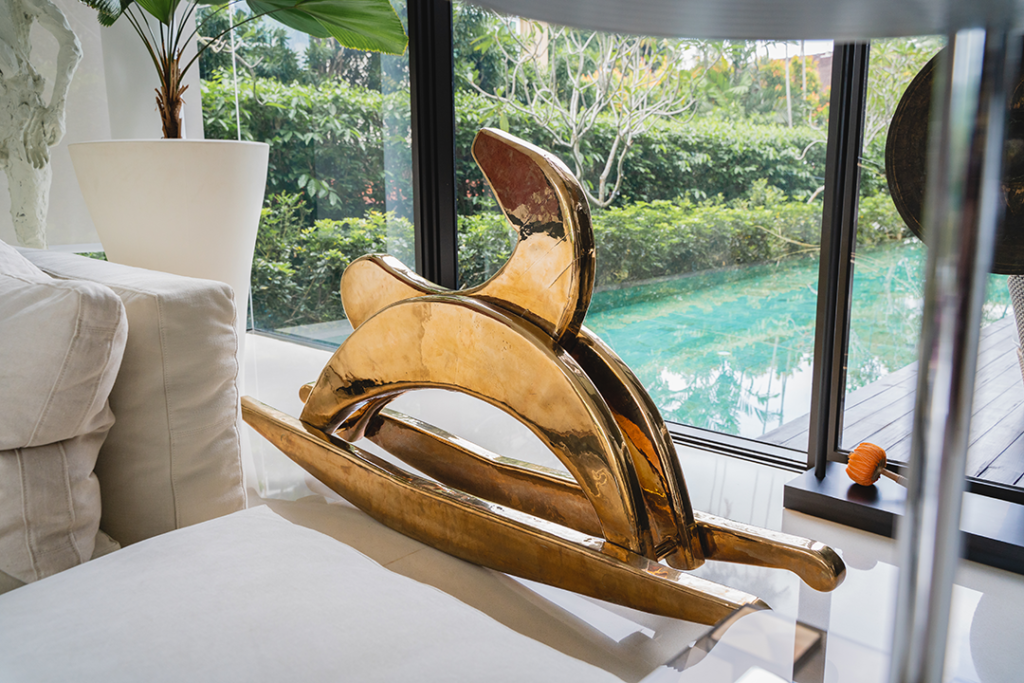
Your collection has a number of really iconic works. There are artists that operate in exactly this mode of making which you’ve just described — minimalism and getting to the essence of things. So artists like Dan Flavin, Carl Andre, Nam June Paik – with his great sense of humour and playfulness – Ai Wei Wei, Lee Ufan, Chen Zhen. I think audiences in Singapore will be thrilled to know that they’ll be able to see a selection of your collection at a show that’s happening during Art Week next year.
Could you choose perhaps two or three works that you’ll be showing in this exhibition and tell us a little bit more about what makes that particular work so compelling for you?
Pierre Lorinet: Sure. Maybe I’ll take a step back first. Once we defined the theme of the collection around sculpture and minimalism, it was also important to define how to go about building it. What artists and what works to focus on within that theme. How we went about defining this approach will naturally bring us back to the show we’re doing and give it context.
We wanted to anchor the collection with some key works from some of the artists that defined minimalism. So that’s how, initially, we looked at American minimalism with artists such as Dan Flavin, Sol LeWitt, Carl Andre and started acquiring a number of works from them to really create the centrepieces. Then beyond that, we started also looking at contemporary artists who either were inspired by these artists or the movement, and building on a broader base. Finally as I moved to Asia, I also started incorporating Asian artists. That’s how little by little, we built this comprehensive collection around American minimalism, and then added more contemporary artists and Asian influences as well. The show we are presenting will most likely have one room where you will have the original American minimalists, moving into the next space where you will have more Asian artists, echoing the works of western minimalists but adding to the mix their own cultural and political influences.
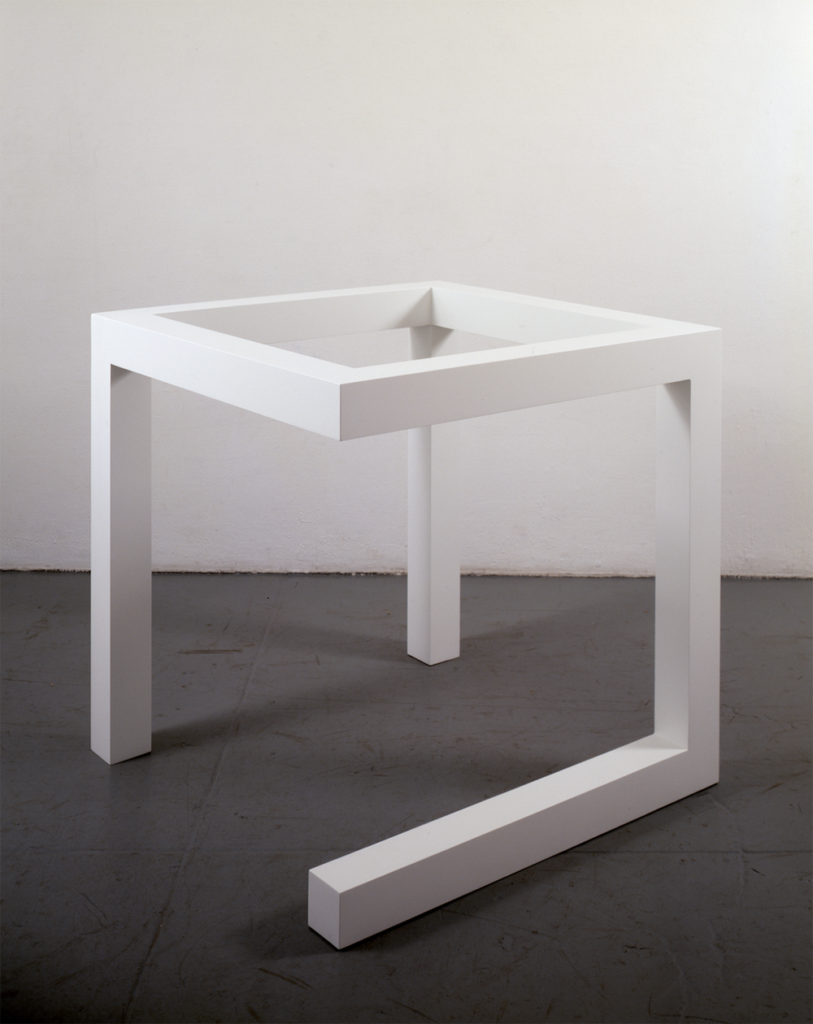
I obviously like all the works presented in the show but if I had to choose two works, it would be those by Lee Ufan and Nam June Paik. Lee Ufan is a Korean artist but very much influenced by Japanese Zen and its minimalist approach. Pre-COVID, at Art Basel Hong Kong, my wife and I came across this work, and I had never seen anything like it before in any of the fairs or galleries we visited. This one was shown by the gallery SCAI The Bathhouse. When I first saw it, I thought it was quite raw and a difficult piece. It is basically a sheet of metal with a glass on it, and a rock resting that cracked the glass. So it’s quite bare and minimalist. The more I looked though, the more I really loved the work. It reminded me of Japanese zen gardens but with a twist or an anomaly provoked by the random cracks. Although it was probably a little bit outside my budget, I just couldn’t let it go. It is from 1969 originally so it was the perfect work to bring into the collection from Lee Ufan alongside his American contemporaries. I ultimately decided to acquire it on the day which is quite rare for a work of that significance. It normally takes me more time. That work was then exhibited at the Taiwan Biennial after which we moved it to Singapore. So, for the exhibition next January, it will be the first time we are getting it out of storage which I am really looking forward to.
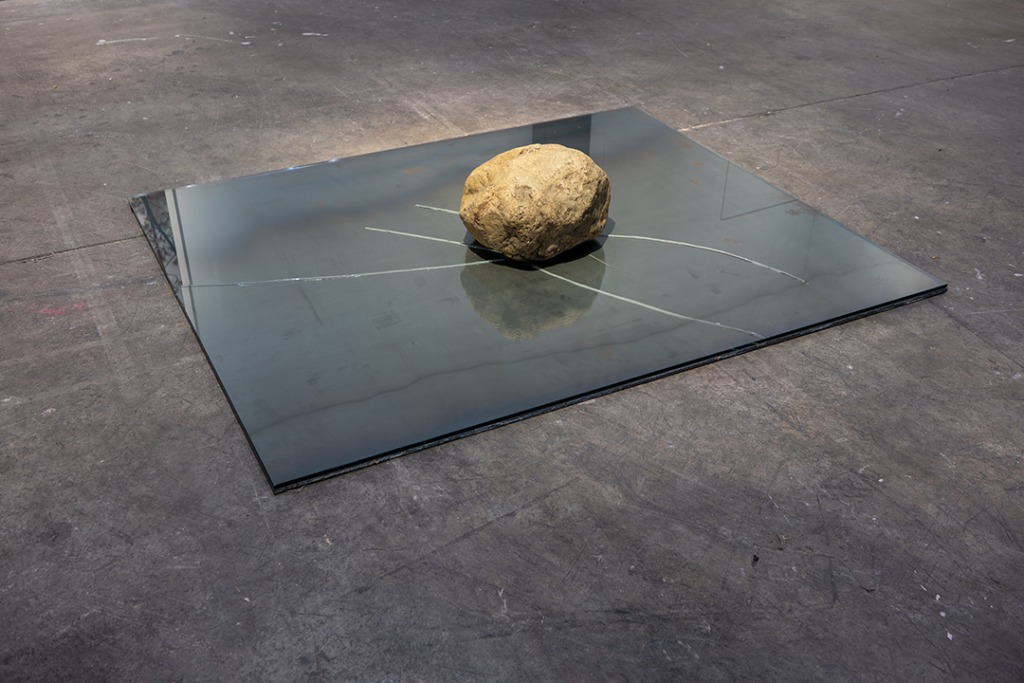
Lucky us!
Pierre Lorinet: Lucky me as well because I have limited space at home, and the works I collect tend to be relatively large and bulky, not always easy to install in our living space. It’s been in storage, and I really don’t enjoy that, I want the works to get out and be shared. I’m really looking forward to the exhibition. If I’m not mistaken, when you acquire the work, you have to redo the glass sheet every time you display it. So you redo the sheet of glass, and then basically when we install it, we will have to break it by dropping the stone on it by hand. There is a manipulation element to the work, which I think is exciting.
So it’s a glass breaking ceremony.
Pierre Lorinet: Exactly, so maybe we will wait for the opening for that. The other work I am really excited about is the Nam June Paik, because he’s an artist that I consider ground breaking. He coined the term “electronic super highway”. He really brought video art into the mainstream. He incorporated video streams, musical sound, performance art and robots in his work making it extremely diverse and striking. He is also interesting because being Korean but having lived a large part of his life in the US, he bridges Eastern and Western influences. I think it makes him a fascinating artist and an obvious choice for the collection. I had been looking at his works over the years and while there are quite a few available they were not necessarily the right works, the right period, or some were simply unaffordable as far as my budget is concerned. Having somewhat given up, Edward got approached during COVID by a private collector who had a work that he wanted to sell. So we engaged and looked at it; it turned out to be like the Lee Ufan, the perfect work for the collection — it was the Sister from the iconic Robot series from the ‘80s. The one thing that was slightly problematic was some of the original TV screens had been replaced by modern flat screens. We wanted to acquire it only if it was in original condition. We started having back and forth discussions with the seller and with the artist’s estate and other experts to understand what we needed to do to make sure it was in perfect condition as intended by the artist. To obtain the various replacement items, to install them – all that during COVID – basically took forever. It took us nine months before we could complete the sale. That was a very long birthing process, if you can call it that. Luckily though, we managed to complete this just before the National Gallery Singapore’s Nam June Paik exhibition in Nov 2021. Finally, we were able to bring it to Singapore and lend it to the National Gallery in time for the show. For me it was great because I was able to see Sister in the museum, in the room with other robots from the series as well as other works from Nam June Paik. I’m happy to bring it out again to show those who unfortunately missed the exhibition.
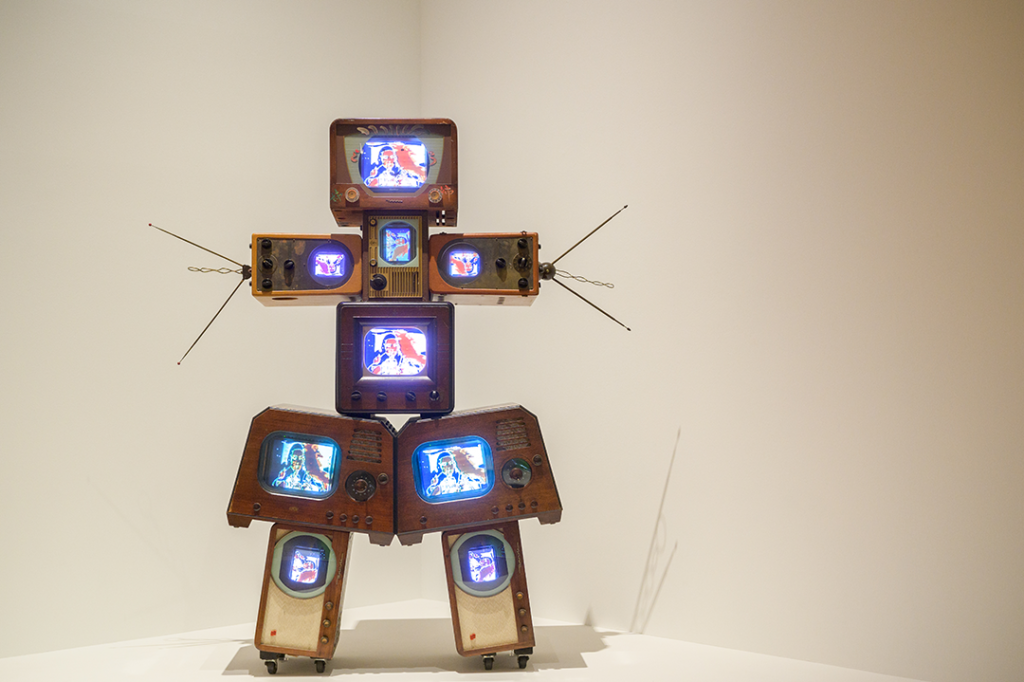
You spoke about how you started with American minimalism, and when you moved to this region, you started to look at Asian artists whose works might speak to that legacy. Now, having lived in Singapore for the past decade or so, have you encountered any artists from here or from the region whose work or practice excites you?
Pierre Lorinet: Yes I have, some do hark back to minimalism, but not always because while my approach sounds very rigorous and structured, actually, at the end of the day art is about what you like. In that context I also buy works which do not relate directly to the core theme and are typically drawings, sketches or similar practices. I do like Chinese ink for that reason with its simplicity and elegance. It has some sort of lightness about it. One of the artists I first encountered when I came to Singapore was Chua Ek Kay. I thought he was really interesting because I knew traditional Chinese painting, but I didn’t know that there were artists who actually used that technique and then painted resolutely modern works, whether they were pictorial representations or sometimes completely abstract. I really enjoyed his practice. There was an exhibition at the National Gallery in the early years of my stay in Singapore. After seeing it and enjoying it thoroughly, I sought out some of his works and acquired a couple from the time of his cooperation with the Singapore Tyler Print Institute (STPI). Chua Ek Kay was an artist that made really beautiful, interesting and surprising works. I don’t think that Singaporean artists get as much publicity outside of Singapore as they should. His work really deserves a lot more exposure.
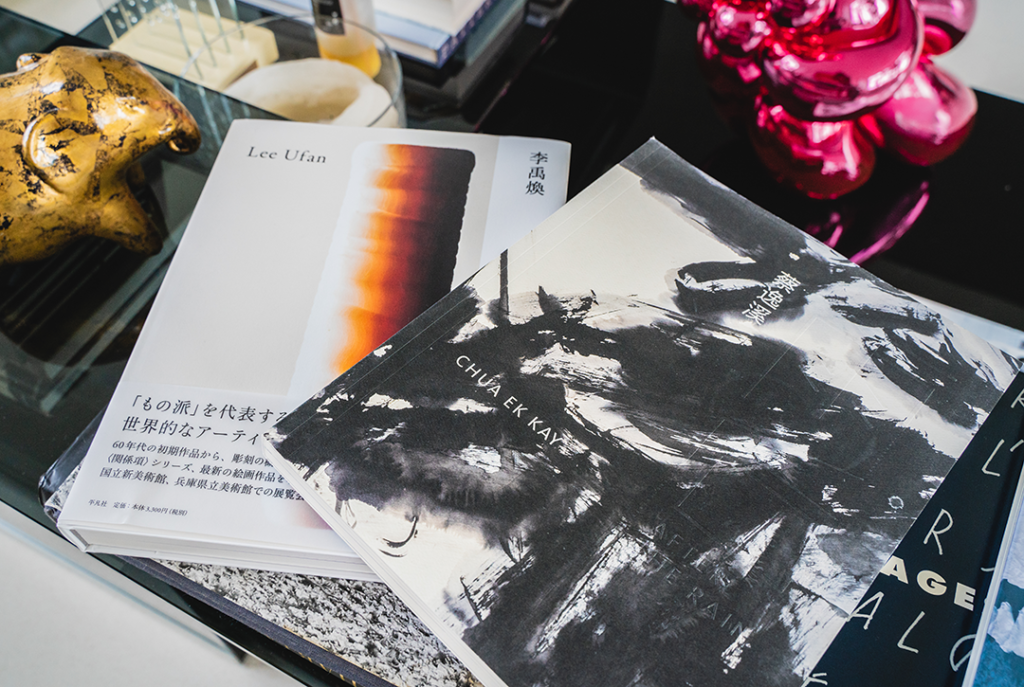
Another artist I discovered as well is Kim Lim. She’s an artist who was a real pioneer when you think about it. She was a woman artist in a world dominated by men. She went to London in the ‘50s, and became involved in the British minimalist movement . In Singapore, I have not heard much about her which is surprising. She was probably one of the first international Singaporean artists making non-traditional works.
Finally, if I think about contemporary artists, one I like and follow in Singapore is Dawn Ng, whom I discovered during one of the Singapore Art Weeks and through her work ‘Perfect Stranger’. I thought the poetic and also sometimes humoristic nature of the work was very interesting. I also enjoyed her more recent work ‘Into Air’. All of these series of work are about the passage of time and its impact both physical and psychological. I really appreciate the way she goes about her work, and feel there’s a lot of depth, preparation and intention that goes into it.

Thank you for sharing your thoughts on Singapore artists. Let’s talk about your involvement with the Singapore art scene which you have engaged with in different capacities, first as a council member of the National Arts Council, and more recently as Chairman of the stART (Sustain the Arts) Fund. What factors do you think are necessary for the art ecosystem in Singapore to flourish in the coming decade?
Pierre Lorinet: There are a couple of things I can think of. One is, Singapore historically has been a place of exchange, it became a trade centre globally. I think it has thrived and managed to develop a very successful country and society around this. In the art space, it should try to play the same role. It should be this convening place where you bring all the artists from the region together, in this one place to meet and exchange, but also bring international content, whether it be collectors, curators or international artists, to discover the regional art scene and artists, to cross-fertilise creativity. I think this role of mixing different art movements, different art influences, different cultures, is essential to art. It has always been part of art’s creative process and you saw it for example with Impressionism: Monet in particular was inspired by Japanese prints. Then there’s plenty of examples where there’s been this mix of cultures and mix of practices that have enabled others to go beyond their immediate universe. I think Singapore really has a role to play in bringing Southeast Asian art and Asian art in general to global audiences, but in reverse also bring other artists here to understand better the local arts scene and the creative works it produces. I think Singapore is well positioned to play that role.
The other element is around the local ecosystem. I believe it’s essential to build the ecosystem and help Singaporeans really discover, appreciate and experience art. That starts in many different ways — it can be at school, by practising, but also being taken to shows, whether it’s live shows or paintings or exhibitions. It’s about helping people access art — bringing it to the communities — but also having the communities understand that there is a value to art and therefore be willing to pay for attending and for participating in order to support arts organisations.
There is a lot of wealth in this part of the world, and in Singapore in particular. How do we bring out art as a core area where people are willing to give in the same way that they give to religious or social causes? I have heard this notion that art is a nice to have, but not a necessity. That’s completely wrong, because if you look at human civilization from millennia back, art has always been part of society. That’s how you build a culture and a cohesive society. Cavemen used to make paintings on their walls. It’s not a nice to have, it’s an essential form of expression that is part of our everyday life and without it, it leaves us empty. So I think there’s a lot of work to be done to make sure we promote art as a core element of Singapore’s society and culture.
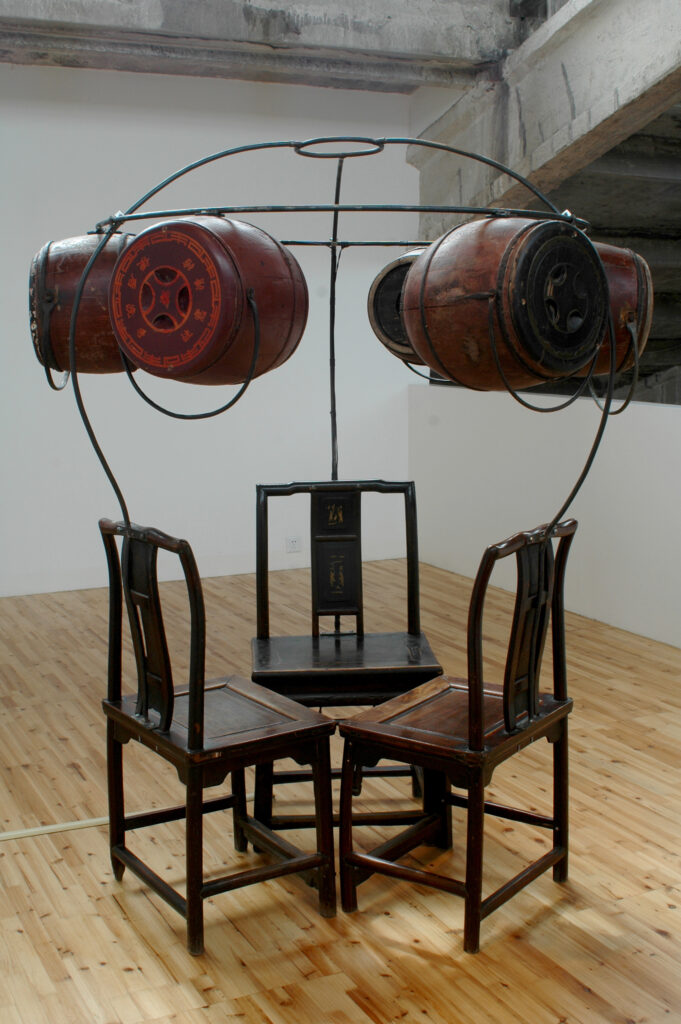
You are also a member of the ART SG Fair Advisory Group. What role do you think the fair can play in terms of what you’ve just described?
Pierre Lorinet: I think the fair can support both points I made earlier. One is surely as a place where you bring in regional and international galleries, bring collectors and curators from around the world, to look at Singapore and at the art scene in the region. That’s an essential role ART SG can play of bringing everybody together in one place to share, participate and discover. The second point is also about working with the local community and stakeholders, such as local galleries, artists, collectors, really helping them and the public at large understand that art is not just this thing behind closed doors for wealthy individuals, but it’s for everyone. So finding a way to cater to all the audiences I think is going to be essential as well in that respect.
Thank you so much for your time today, and here’s looking forward to the exhibition of your private collection next January!
ABOUT THE AUTHOR: TAN SIULI
Tan Siuli is an independent curator with over a decade of experience encompassing the research, presentation and commissioning of contemporary art from Southeast Asia. Major exhibition projects include two editions of the Singapore Biennale (2013 and 2016), inter-institutional traveling exhibitions, as well as mentoring and commissioning platforms such as the President’s Young Talents exhibition series. She has also lectured on Museum-based learning and Southeast Asian art history at institutes of higher learning in Singapore. Her recent speaking engagements include presentations on Southeast Asian contemporary art at Frieze Academy London and Bloomberg’s Brilliant Ideas series.

Share this article: